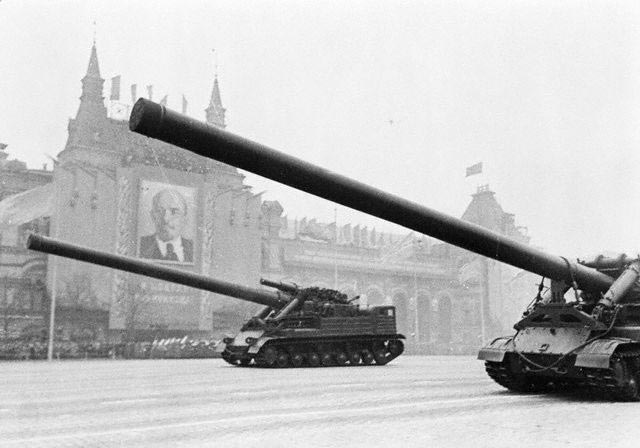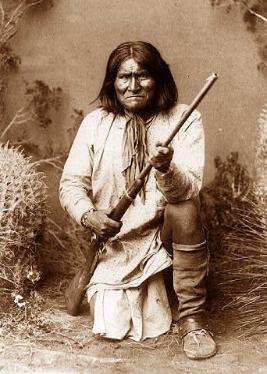
“Iraq’s ‘super gun’, while certainly mammoth, was just one in a long series of ultra-heavy artillery pieces that have appeared throughout history. Consider these other ‘big shots’.”
FEW TODAY LIKELY remember the name Gerard Bull. Yet at the time of his death in 1990, he was considered by many to be one of the most dangerous men on the planet. In fact, the Canadian-born engineer was so feared that at least one nation’s government wanted him dead.
On March 22, 1990, a squad of hit men gunned down the 62-year-old Bull at the front door of his Brussels apartment. While the identity of the assailants remains a mystery, many suspect that the killers were either operatives of the Israeli Mossad or possibly agents of the Iranian intelligence service. [1]
Both countries certainly had a motive for the killing. Bull was the driving force behind Saddam Hussein’s much-feared Project Babylon, a not-so-secret, two-year “supergun” program that had the Iraqi dictator’s neighbours more than a little worried.
Once completed, the fixed, 500-foot-long, 600-millimetre artillery piece would have been able to lob a projectile from an Iraqi mountaintop into either central Iran or Israel. [2] The gun’s shells would travel upwards of 600 miles in an arc that would have taken them outside the earth’s atmosphere.
At the time of Bull’s death, Iraq was nearing the completion of a smaller 100-foot long version of the gun that could fire both shells and even space satellites. The murder stopped Babylon dead in its tracks.
The following year, all of Iraq’s major weapons programs were targeted by Coalition forces in Operation Desert Storm. But Iraq’s supergun, while certainly mammoth, was just one in a long series of ultra-heavy artillery pieces that have appeared throughout history. Consider these other ‘big shots.’

The largest caliber
If we’re going to judge the size of a gun by its muzzle-width (or caliber), then the 20-foot-long, 39-ton Russian “Tsar Cannon” is among the biggest. The bronze weapon was designed in 1586 to fire 890-mm stone projectiles capable of knocking down castle walls. [3] Each round weighed 1,700 pounds. [4] Not surprisingly, the Tsar Cannon’s tremendous size and weight, along with the staggering mass of its ammunition, made it totally unworkable on the battlefield. In fact, the gun was most likely manufactured as a prestige piece. [5] While there is no official record that it was ever fired in anger, scoring on the inner barrel suggests it might have been tested at least once. The Tsar Cannon is currently on display outside the Kremlin in Moscow along with an ornamental stack of one-ton iron cannonballs. These were supposedly forged in the 19th Century and are entirely decorative.

Amazingly, Great Britain forged an even larger caliber artillery piece than the Tsar Cannon in the 19th Century. Known as the Mallet Mortar, it was designed for the Crimean War but not completed until 1857. The 42-ton gun could fire 914-mm exploding shells nearly three miles. [6] Each of the projectiles weighed one-and-a-quarter tons. Only two of the monster mortars were ever produced, but like the Tsar’s Cannon, neither saw action. Mallet Mortars were fired a total of 19 times however, but only on the test range and never in battle. [7]

Another 914-mm mortar, this one American, also never saw combat. The U.S. Army’s Little David gun was planned to be rolled out during the amphibious invasion of the Japanese home islands in late 1945. [8] The war ended before it could be used. The 40-ton weapon featured a 22-foot long barrel that could launch a 3,400-pound shell a distance of six miles. [9] To see a film of the Little David fired, click here.
The heaviest projectile

While the notorious Schwerer-Gustav railroad gun of Nazi Germany was of a smaller caliber than the Little David or the Mallet Mortar, it fired the heaviest projectile ever lobbed by an artillery piece. [10] Designed in the 1930s to batter the French Maginot Line on Germany’s western border, the 155-foot long, 1,350-ton gun could throw a 7.1-ton artillery shell just under 25 miles. [11] The gun, which featured a 106-foot long barrel was served by a crew of 250 and had a rate of fire of one to two shots per hour. [12] The 800-mm Schwerer-Gustav also has the distinction of being the largest caliber gun in history to have a rifled barrel – the guns mentioned previous were all smooth bored. [13] And unlike the above-weapons mentioned, the two Schwerer-Gustavs that were produced both saw action on the Eastern Front. One was used during the siege of Sevastopol. Neither weapon survived the war – one was captured by the Americans and scrapped, the other was destroyed by the Nazis before it fell into enemy hands. To see archival German footage of this super gun in action, click here.

Guns on Ships
The largest modern cannon to ever go to sea was Japan’s Type 94 naval gun. Although designated as a 400-mm weapon, the cannons fired actually 460-mm shells. The smaller sounding name was an attempt to conceal the true nature of the weapons from adversaries. [14] Each of the three Yamato-class battleships, built for the Imperial Japanese Navy between 1937 and 1942, were armed with no fewer than nine of these enormous weapons. Yamato battleships featured a trio of the three-gun turrets, each of which themselves weighed more than a destroyer. [15] Type 94s could lob both armour-piecing and high-explosive shells up to 25 miles. They could also fire 3,000-pound anti-aircraft rounds known as a Sanshiki. The projectiles worked like enormous shotgun shells and sprayed incendiary sub-munitions in the direction of enemy planes.

Although featuring a slightly smaller caliber than the Type 94, the British BL 18-Inch Mk. 1 naval gun did throw a heavier shell – a 3,320-pound projectile to be precise. [16] Ordered by the Royal Navy in the years leading up to the First World War, the British admiralty wanted to put the heaviest gun possible onto a warship. [17] The result was three vessels — HMS Furious, HMS General Wolfe and HMS Clive — all equipped with a single Mk. 1 gun. While the Furious never saw action (and was later converted to an aircraft carrier), the Wolfe and the Clive did, firing a total of 85 rounds during the final year of the First World War. All three vessels were removed from service after the conflict. Two of the Mk. 1 guns were later reassigned to coastal defence duties in the U.K.

Although both the British Mk. 1 and the Japanese Type 94 are often cited as the largest seaborne artillery pieces in history, [18] the Scots built a bigger gun for King James IV’s 16th Century super warship The Great Michael. The gun, named the Mons Meg, was a seven-and-a-half-ton cannon capable of firing a 510-mm, 400-pound shot up to two miles. [19] The gun reportedly could only be fired about eight times a day due to the intense heat it would generate. Although the Royal Scottish Navy found the Michael too expensive to maintain and sold the ship to France, the Mons Meg was later added to the arsenal at Edinburgh Castle where she would be later fire ceremonial salutes on special occasions.

Longest-ranged guns
When the first shells from Germany’s infamous Paris Gun began landing on the City of Light in the spring of 1918, authorities wrongly believed that they were under attack from a high-flying Zeppelin. [20] In reality, they were being bombarded by a 211-mm field gun with an unheard of range of 80 miles. In the first day of its use, the gun hammered the city with 21 shells, each weighing more than 200 pounds. [21] Despite the terror the weapon wrought on the civilian population, the Paris Gun proved to be more trouble that it was worth for the Germans. For starters, the 350-pound powder charges required to send a shell such a distance wore the barrel’s rifling down so quickly each successive blast measurably increased the caliber of the gun. In fact, after firing 60 rounds, the entire barrel was ruined and needed to be replaced. [22] The gun was also woefully inaccurate. Not only was it virtually impossible to hit anything smaller than a city from a distance of more than 60 miles, the flight time from muzzle to target was more than three minutes. In fact, the gunners actually needed to calculate the earth’s rotation when aiming the weapon. Simply put, by the time one of the gun’s shells returned to earth from its then unprecedented 130,000-foot-high flight path, the city had moved slightly with the planet’s own rotation. [23] Despite this, the Germans managed to kill 256 civilians with the Paris Gun. In fact, 68 died in one lucky shot alone, when a round struck a packed church on Good Friday of 1918. [24] The Paris Gun was withdrawn from service in the final weeks of the war, lest the advancing Allies capture it. It was dismantled in Germany before the Armistice. Although militarily a failure, the Paris Gun was the first device to launch a man made object so high into the stratosphere.

In World War Two, the Germans designed an even longer ranged gun than its Paris weapon. The 150-mm V-3 super gun was designed to fire 310-pound shells distances of up to 102 miles. [25] The Nazis planned to build the V-3, into a hillside near the Calais, France and use the fixed installation to strike at London at a rate of 300 shells per hour. [26] The gun, nicknamed Busy Lizzie, was destroyed by Allied bombers before it could be fired. A pair of much smaller experimental versions were used to pummel targets in Luxembourg in the winter of 1944 to 1945. A novel barrel-design would have given the V-3 its exceptional range. It featured several chambers along the length of the barrel that would be loaded with explosives. As a projectile was fired and travelled out of the gun, these secondary charges would blow, adding to the shell’s energy. Once the shell left the smooth-bore barrel, fins would open to stabilize its flight path.

The V-3 design was revived in the 1960s by a joint U.S./Canadian design consortium known as HARP (High-Altitude Research Project). The group was seeking a potentially inexpensive method of launching material into space or even firing shells intercontinentally.
Using a testing facility in the Barbados, the HARP team managed to fire a 400-pound non-explosive projectile out over the Atlantic at Mach 10 (8,000 mph). The missile also reached an altitude of 112 miles (nearly 600,000 feet) – a record for highest-flying artillery shot that still stands. [27]
The project was cancelled during post Vietnam-era defence cutbacks. One of the driving brains behind HARP, a Canadian by the name of (you guessed it) Gerard Bull, would spend the subsequent decades searching for other world powers interested in developing super gun technology. He was jailed for designing artillery for South Africa in contravention of trade sanctions against that country. After his release, he found a patron in Saddam Hussein. The rest is history.
SOURCES
1. http://en.wikipedia.org/wiki/Project_Babylon
2. Ibid
3. http://www.kreml.ru/en/kremlin/tsar_gun/
4. Ibid
5. Ibid
6. http://en.wikipedia.org/wiki/Mallet%27s_Mortar
7. Ibid
8. http://en.wikipedia.org/wiki/Little_David
9. Ibid
10. http://en.wikipedia.org/wiki/Schwerer_Gustav
11. Ibid
12. Ibid
13. Ibid
14. http://en.wikipedia.org/wiki/40_cm/45_Type_94
15. Ibid
16. http://en.wikipedia.org/wiki/BL_18_inch_Mk_I_naval_gun
17. Ibid
18. http://en.wikipedia.org/wiki/Mons_Meg
19. Ibid
20. http://www.firstworldwar.com/atoz/parisgun.htm
21. http://en.wikipedia.org/wiki/Paris_Gun
22. http://www.firstworldwar.com/atoz/parisgun.htm
23. http://en.wikipedia.org/wiki/Paris_Gun
24. http://www.firstworldwar.com/atoz/parisgun.htm
25. http://en.wikipedia.org/wiki/V-3_cannon
26. Ibid
27. http://en.wikipedia.org/wiki/Project_HARP
REFERENCES
http://www.theblaze.com/stories/history-revisited-nazi-gustav-was-largest-gun-of-all-time/
http://www.darkroastedblend.com/2008/07/biggest-guns-in-human-history.html










Real interesting facts, sir. Good stuff.